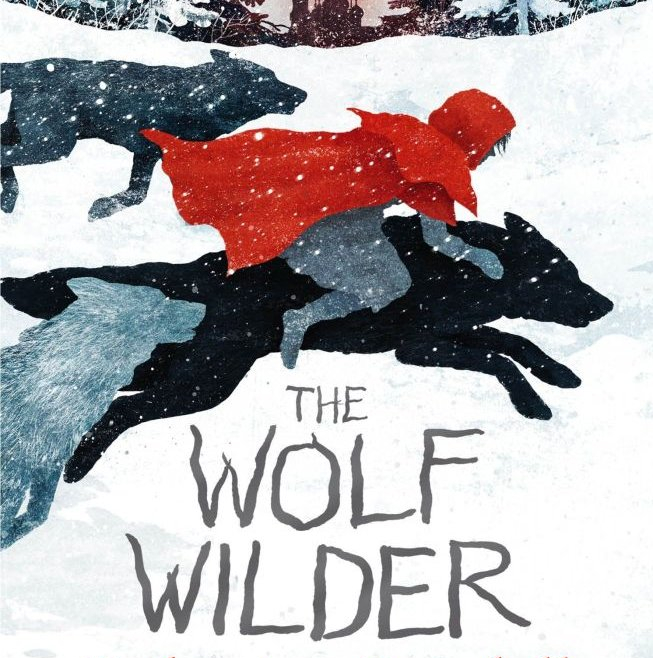
‘Once upon a time, a hundred years ago there was a dark and stormy girl.’
With echoes of the Brothers Grimm and Snoopy, The Wolf Wilder is a book that already feels like another classic from Katherine Rundell. Adding to that effect are atmospheric illustrations throughout by Gelrev Ongbico who talks here about the process of creating the images for this unforgettable tale of wolves, revolution and ballet set against a snowy backdrop in dark and stormy Russia.
Gelrev: I got an email from Bloomsbury’s design team inquiring if I had ever considered illustrating a children’s book, and if I would be interested in working with them on a book. They gave a brief description of the story and it had scenes of forests, trees and animals, things and topics that are interesting to me.
I went on to do some further research. By just typing “black and white snow” into Google one can have lots of inspiration already, so I mostly focused on those. I also drew on the dark work of Edgar Allan Poe, the work of my favourite Japanese filmmaker Akira Kurosawa and his compatriot, photographer Masahisa Fukase and the wildlife illustrations of Charles Livingstone Bull.
I can actually say that they gave me a lot of freedom (which was both fun and scary) especially when it came to creating the interior art. Katherine provided some thoughts/ feedback/ suggestions on some of the illustrations.
Tygertale: Although Gelrev didn’t work directly with Katherine Rundell there were unexpected overlaps between her vision for the book and Gelrev’s realisation. ‘This is the photo that gave me the idea of Feo asleep in a pile of wolves,’ she writes.
And this was Gelrev’s finished image. ‘As far as I know, Gelrev never saw the photo – just a lovely coincidence,’ says Katherine.
Gelrev: For the cover, the design team gave some ideas/suggestions but they were open to considering my own ideas. I submitted 3-4 concept sketches and we started working from there.
For the interior art, I was given a brief, sort of a guideline on what particular parts/scenes of/from the story to draw for each chapter header, vignette, etc. Basically, scenes from the story that they’d like me to focus on. But for the most part, I can say that I was given a lot of freedom to interpret the scenes as how I saw them in my mind.
When it comes to making illustrations, I first do thumbnails to explore various designs/compositions. I then refine the drawings, scan them, and work on them in Photoshop where I redraw the pencil drawings using a number of brushes, add/remove textures, etc. until I arrive at an image that’s more or less close to the thumbnail and to the image I had in mind. Though in reality this doesn’t always happen. 🙂 (I’ll try to demonstrate this later.)
These were some of the textures I used in creating the illustrations. They’re mostly just random marks made on paper using either ink, acrylic and watercolours, etc.
I think the biggest challenge for me was my lack of experience, because this was my first time to illustrate a children’s book. A previous experience would have been very invaluable. I did tell the design team about it because I knew that they were operating a business, and I worried that I might mess up production due to inexperience, but they were kind enough to say that they can guide me through the process if I want and will be open to any questions that I may have, which made me grateful.
Another challenge for me was the availability of references when I needed them. I did buy a book called “Wildlife Painting Basics (Wolves, Foxes and Coyotes)” by Jan Martin McGuire which helped, and I downloaded a bunch of wolf and figure drawing tutorials from Deviantart and various websites and studied them. I also reviewed figure drawing from sources like Andrew Loomis’ books.

I usually start by creating thumbnails to explore various designs/compositions. Here I scanned 3 pencil drawings and used Photoshop to push the values.

Once I’ve decided on a composition, I would then gather lots of references and start making more detailed drawings. Here I scanned the drawings.
I usually work on the environment first because I find that working on the trees, rocks, etc. is more fun than working on the characters. I use a brush pen to create the trees, twigs, branches, etc. which I then scan into Photoshop to further manipulate. I try to use them over and over, I just skew, resize, flip, combine, etc. them so I won’t be wasting lots of paper and trees.
Once I have the background/environment, I then would work on the characters. I would set the wolf drawing layer to Multiply (blending mode), and create another layer below it, and then I would trace the drawing using a Photoshop brush.
I then would add and use a variety of textures and brushes to slowly build up the illustration. Repeat this process to do the other wolf.
And here is the finished image showing Black and White in action.
I think that for most people, wolves are these dangerous animals that will attack and eat humans if they want to, probably fuelled by stories of werewolves and of course, those of popular tales including the Little Red Riding Hood and the Three Little Pigs that are usually introduced to humans at a young age. When I first learned of the Wolf Wilder, the story of the Little Red Riding Hood first came to mind, as it also involved a wolf and a girl.

The Wolf Wilder is published by Bloomsbury.
















